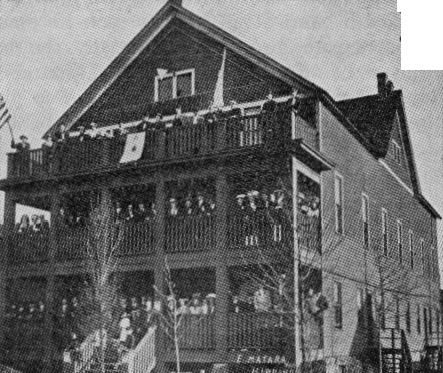benefit fund to which members contributed over and above their regular Tapio dues.
Tapio's financial standing was weak, particularly in the beginning, although the situation did change when the society grew large enough to have almost 300 members. In the early years, however, this financial distress was reflected in the subsequent disunity regarding the types of entertainment the society was to sponsor. The society wanted to sponsor dances, and to rent its premises to others to hold dances, but the constitution of the Temperance Brotherhood banned dancing. In 1896 the issue came to a head, and after a vote by sealed ballot the majority declared for severing ties with the Brotherhood and for continuing on an independent basis. The minority which disapproved the resolution quit Tapio and started a new temperance society, named the Seeker of Truth, which promptly joined the Brotherhood.
There were also proposals, promptly made, that the two societies iron out their differences and unite, but relations grew more bitter rather than more cordial and threatened finally to turn into court action
when the new society claimed that the Tapio hall should belong to them on the basis of the Brotherhood constitution, to which Tapio had once adhered.
The Seeker of
Truth society, then, had to go on its own course as a Brotherhood chapter and in time (1902) even built its own hall, to house activities which
closely duplicated those of the Tapio : a speech and debating group (with topics like `the possible beneficial effects of music on temperance work' and `whether love or money was more important in matrimony' up for discussion); a chorus, with Alex Sandberg, Kalle and Adolf Lundquist and Ivar Ahonen serving as directors; a band, with leadership by Victor Taipale, William Ahola and John Laitinen; a dramatics group, directed by John Colander.

Sampo Temperance building in North Hibbing.
514